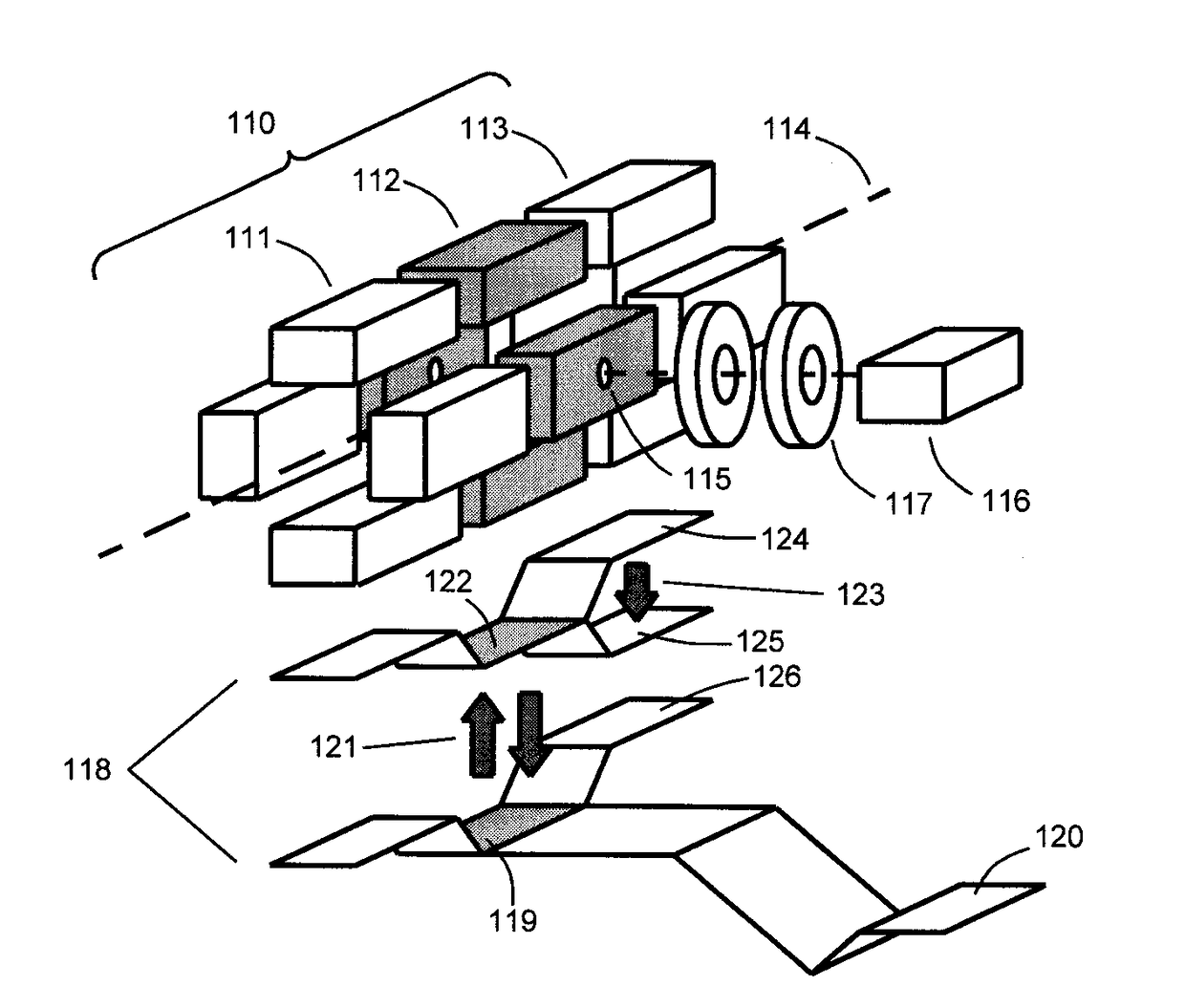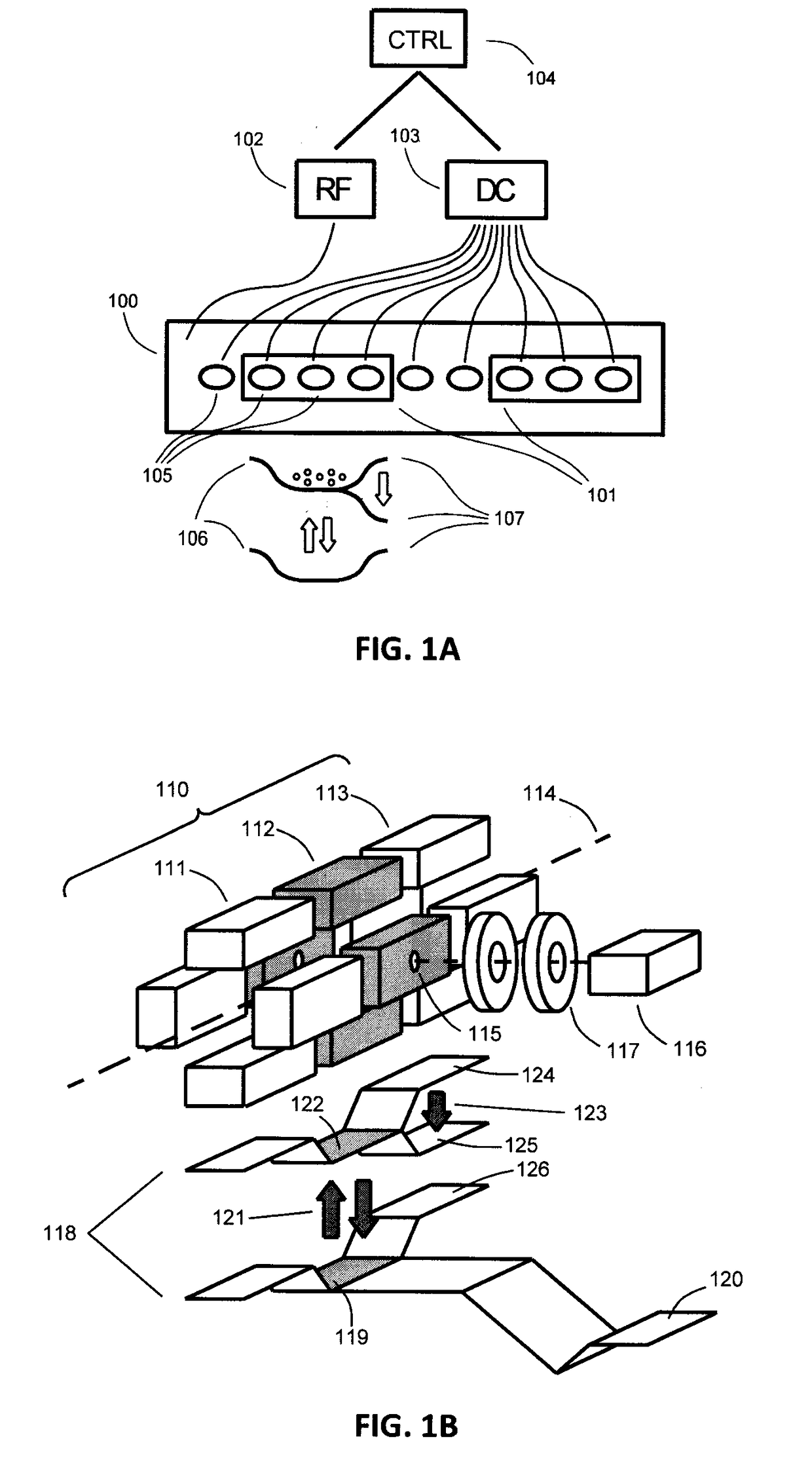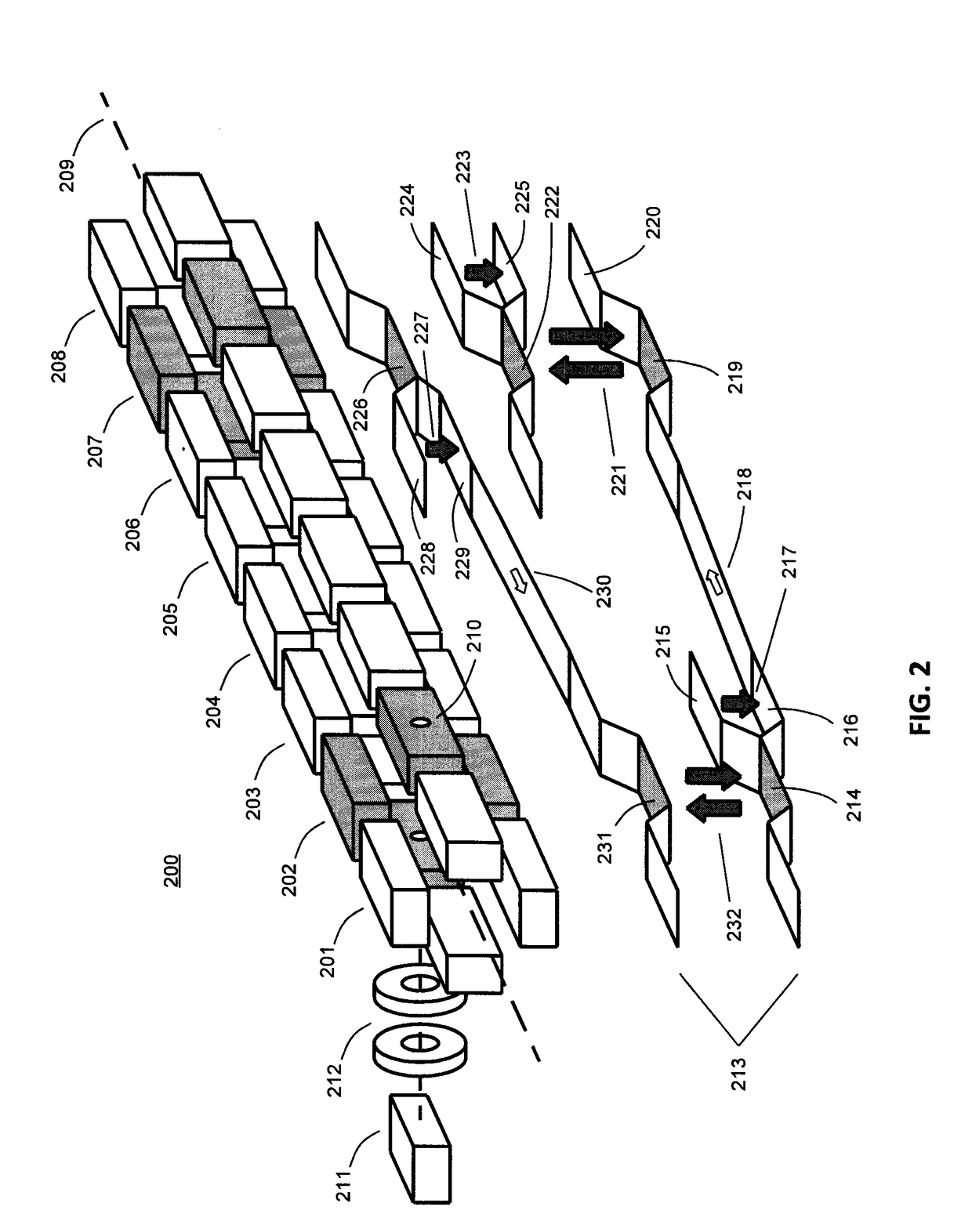Segmented linear ion trap for enhanced ion activation and storage
a linear ion and enhanced ion technology, applied in the field of enhanced linear ion traps, can solve the problems of limited narrow time window for interactions, limited voltage amplitude accessible for the intermediate state, etc., and achieve the effect of facilitating the release or receiving of ions and enhancing collision induced dissociation
- Summary
- Abstract
- Description
- Claims
- Application Information
AI Technical Summary
Benefits of technology
Problems solved by technology
Method used
Image
Examples
Embodiment Construction
[0052]A general description of a linear quadrupole ion trap of the present invention is provided with reference to FIG. 1A. The linear ion trap 100 is connected to a RF generator 102 producing two RF waveforms, each applied to a pair of pole electrodes of the linear ion trap forming a RF trapping field component to trap ions radially. The linear ion trap 100 is also connected to a multi-output DC generator 103 producing multiple DC electrical potentials forming multiple DC field components 105 superimposed onto the RF field component and distributed across the length of the ion trap to control ions axially. A control unit 104 (e.g., FPGA control unit 346 further described below with reference to FIG. 3C) is used to define the characteristics of the RF waveforms and also the timing and the switching of the DC electrical potentials between different levels. The linear ion trap is preferably configured with two discrete trapping regions 101 for processing ions therein. The levels of th...
PUM
 Login to View More
Login to View More Abstract
Description
Claims
Application Information
 Login to View More
Login to View More - R&D
- Intellectual Property
- Life Sciences
- Materials
- Tech Scout
- Unparalleled Data Quality
- Higher Quality Content
- 60% Fewer Hallucinations
Browse by: Latest US Patents, China's latest patents, Technical Efficacy Thesaurus, Application Domain, Technology Topic, Popular Technical Reports.
© 2025 PatSnap. All rights reserved.Legal|Privacy policy|Modern Slavery Act Transparency Statement|Sitemap|About US| Contact US: help@patsnap.com



